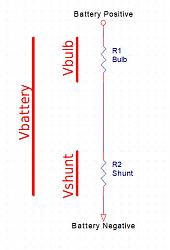Thank you everyone. I think you are on the right track. I wonder if I could use it to measure the current in a 12v lead acid battery? The battery charges to 13.6v but doesn’t seem to have any current capacity. I have a Simpson 372 ohm meter and a Fluke clamp multimeter.



 LinkBack URL
LinkBack URL About LinkBacks
About LinkBacks


 Reply With Quote
Reply With Quote



Bookmarks